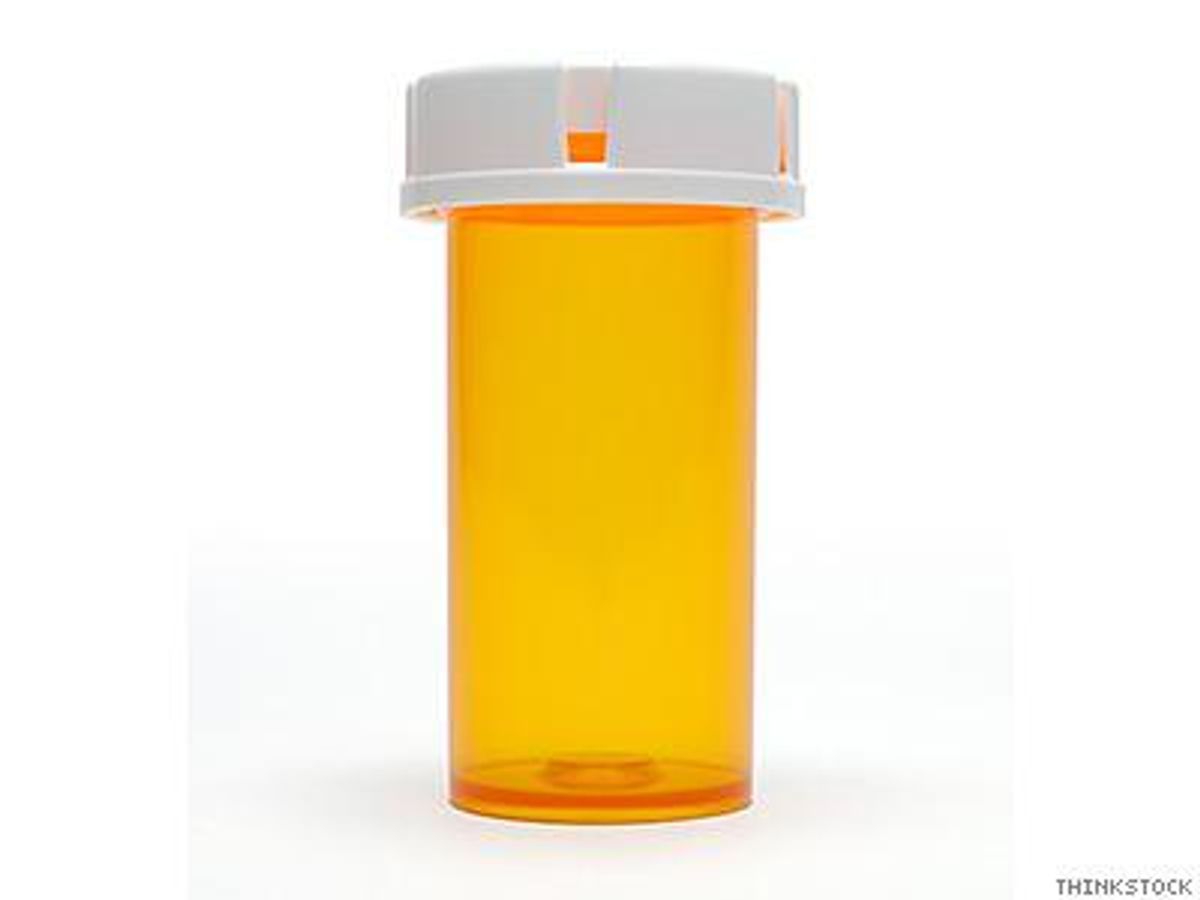As HIV-positive people are living longer, there is a growing number who have been on treatment for extended periods of time — and an increasing population of those who are now drug resistant. The HIV pipeline is as thin as ever, and the overwhelming majority of drugs in development are for patients new to treatment; with little or no medications being developed for heavily treatment-experienced patients. Unfortunately, patients in the latter group have limited to no treatment options and are being left to eventually experience the same fate as people with AIDS in the '80s and '90s. The plight of these individuals is not only being ignored by the pharmaceutical industry but by the HIV advocacy community as well. Something needs to be done.
There are no clear statistics on how many people with HIV are partially or fully drug resistant. There are two types of drug resistance: transmitted drug resistance (becoming resistant to certain drugs from the person you were infected by) and acquired drug resistance (from taking ARVs). The World Health Organization (WHO) estimates that in the U.S., Japan, Europe and Australia, the rate of transmitted drug resistant hovers between 10 and 17 percent. A recent study on transmitted drug resistance found that, overall, men who have sex with men (MSM) have the highest rate in North America at 11 percent. This is in people newly infected, not in those who are treatment experienced, which remains virtually unstudied.
In addition, according to the latest Centers for Disease Control and Prevention report, 10 percent of people with HIV in the U.S. are unable to maintain an undetectable viral load despite being on antiretroviral treatment (ART). This equates to 120,000 Americans with HIV. Whereas there may be other reasons (poor adherence or extended treatment interruption) it is clear that many of these people are unable to form a viable ARV regimen to suppress their virus due to drug resistance.
In addition 66 percent of people with HIV are not in regular care. It is safe to assume that at least some of these people are also drug resistant and not in care because they are unable to successfully reach undetectable levels, thus feel no need to seek treatment.
This is not just the case for HIV, but also for any anti-infective. Pharmaceutical companies are very reluctant to test their new drugs in treatment-experienced patients. The primary reason is the concern that patients who have previously been on ART may have a more severe disease. HIV may have (and likely has) mutated and become more drug-resistant so treatment-experienced patients' disease status may be more advanced than a newly diagnosed patient who is treatment-naïve. This creates a higher standard for demonstrating efficacy, but when companies perform clinical trials for new drugs, they prefer to have the bar set as low as possible. Therefore, because it is harder to prove a drug is effective in treatment-experienced patients, the majority of companies prefer not to invest in developing such pharmacutecals.
There is also concern that patients who have been on treatment for long periods may have residual damage from the ARVs, such as renal or hepatic impairment; or that patients have worsened general health as a result of prior treatment. Treatment-experienced patients do seem more likely to experience side effects from new drugs and companies do not want to deal with the side effects caused by other drugs the patient may already be taking; they want as few variables as possible in order to determine what side effects are caused by the drug being tested.
Additionally, as the U.S. is highly litigious, any side effect experienced by a patient brings the risk of a lawsuit, despite all the waivers and disclosures to participants in clinical trials. Pharmaceutical companies want to minimize both the risk of lawsuits and additional side effects. Therefore they consider testing on treatment-naive patients a much cleaner and safer option.
There are a handful of new treatments for HIV currently in develop for drug resistant treatment-experienced patients, but in general they are stalled in the FDA approval process. This is primarily because the treatments are being developed by smaller biotechnology companies, which can’t raise the necessary funds to conduct the clinical trials required in the drug approval process. The smaller companies also receive little support from the federal government, even though that support is essential for the successful development of HIV drugs.
Every one of the more than 30 currently available ARVs had much of their studies conducted by the AIDS Clinical Trials Group, the largest clinical trial network in the world. The ACTG recently conducted a clinical trial on treatment-experienced patients that found that treatment regimens that do not contain a nucleoside reverse transcriptase inhibitor (NRTI, the backbone of ART), for these patients are as effective and have fewer side effects as regimens that include an NRTI.
The impact on patients is that there are now more options for second- and third-line and salvage regimens. However, the levels of drug resistance to Non-Nucleoside Reverse Transcriptase Inhibitors is also rising, which will make it more difficult for those who already have resistance to NRTIs to build a sucessful treatment regimein.
What is needed is for the ACTG to conduct clinical trials on new HIV drugs in development for drug resistant treatment-experienced patients, as there is an urgent need for new drugs for this population.
Apricitabine (or ATC) is an investigational medication for drug resistant, treatment-experienced patients that has made it to Phase III in the FDA aprroval process. The makers of ATC received approval from the FDA for their registration study — the final step to apply for full approval — but the company has been unable to raise the tens of millions of dollars it will cost to conduct the final trial. So, while ATC has demonstrated efficacy, safety, and tolerability in clinical trials so far, the growing number of patients who need this drug cannot access it. And the only thing standing in the way is money. The ACTG should step up and conduct the final Phase III trial of ATC, which is a much more important and impactful study than much of the research they are currently conducting.
Dennis Liotta, PhD, Executive Director of Emory Institute for Drug Development, is leading the discovery and development of a new type of antiviral that has multiple mechanisms of action that would be effective in treatment-experienced patients and has a much higher barrier to resistance. Dr. Liotta delivered a presentation at the HIV DART 2014 conference on a dual-tropic entry inhibitor (meaning it works against both CXCR4- and CCR5-tropic virus and acts on both receptors used by HIV) that has reverse transcriptase activity. Not only is this drug a new and potentially improved way to treat the virus that will be effective in all HIV patients, it would also be significantly cheaper than currently available antiretrovirals, allowing for more people to receive treatment and bring us closer to reaching the goals of “90-90-90” and “20 x 20.” (UNAIDS goals for 2020: 90 percent of those with HIV will know their status, 90 percent of all patients with diagnosed HIV infection will receive sustained antiretroviral therapy, and such access to treatment will lead to 90 percent viral suppression.)
VM-1500 is Phase II NNRTI for drug resistant treatment-experienced patients that presented data at ICAAC 2014 concluding that further development of the drug was warranted, but where will the money come from? The federal government certainly will not support a clinical trial of VM-1500, despite the fact it it is one of the only drugs in development for drug resistant treatment-experienced patients. VM-1500 is a bioavailable potent inhibitor of wild-type HIV and broadly active against strains carrying mutations associated with resistance to other NNRTIs, including the K103N, Y181C, L100I, K103N, G190A and V106A. Thus far, the data indicates VM-1500 is superior to efavirenz, the dominant NNRTI in today’s ART regimens.
Funding needs to be made available to support the development of drugs that will act as salvage therapies for those in need of clinical options. We cannot say that we are working towards an end to AIDS while we abandon one of the most vulnerable populations of people with HIV — those who are drug resistant. An important part of getting these drugs funded is community support. This needs to be made an issue — written about, talked about, and acted upon — by people with HIV and those advocating for them.
(More information on Apricitabine can be found in the article “World AIDS Day: Up to 17 Percent of HIV-Positive People Need an HIV Drug Still Not Approved” on HIV Plus.)


















































































